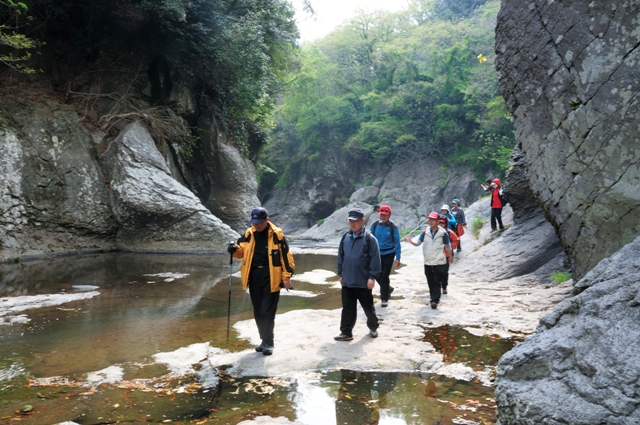|
| |
 |
|
| ▲ “Sehando” (A Wintry Scene) is regarded as one of Chusa’s masterpieces. Photo courtesyJeju Special Self-Governing Province |
[The Jeju Weekly's guide to Jeju's roads of exile is here and you can download our four-page Jeju Travel in pdf here.]
Joseon Korea (1392-1910) had many places of exile, but Jeju was regarded by the authorities as the place of banishment for much of the period. For the literati of the day, expulsion to Jeju was, in the words of histo-rian Robert Neff, “a fate deemed almost as bad as execution.”
Scholar and poet Yang Jin-geon, of Jeju National Univer-sity Storytelling and Education Department, believes Jeju history is inseparable from this experience of exile. Over more than 500 years, in excess of 200 exiles, or “yubae,” were sent to the farthest outpost of the Kingdom, bringing with them a culture which fused with local traditions.
Some were aristocratic threats to the regime, or victims of courtly intrigue. Many were simply rule-violating mer-chants, or common criminals. Whatever their background, they arrived on Jeju destined for a life of solitude. Their intense longing captured eloquently in Professor Yang's "Yubaegil 3."
“The road I walk
is the thing I dread,
I yearn to be
the wind alone.
I long to be
with my darling and
the Jeju wind alone.”
Despite their status, many exiles forged relations with local dignitaries and even took on disciples, thus becoming conduits for haute couture such as calligraphy and painting. Jeju was enriched by this injection of scholarly passion and courtly culture, a fusion now celebrated.
It can be seen not only in the family names carried by the exiles’ descendents, but in the hyanggyo, or Confucian schools frequented by the scholars. Exile is even woven richly into Jeju’s outstanding natural beauty, as evident in the oreum and valleys which inspired their works.
For the visitors wishing to imbibe of this heritage, enthu-siasts, such as Professor Yang, have established a number of “yubae gil,” or exile roads, dotted with historical sites of national and international cul-tural importance. The most extensive of these, the Chusa Exile Road, extends over 26 k.m. of southwest Jeju and marks the stay of artist and calligrapher Kim Jeong-hui (1786-1856).
| |
 |
|
| ▲ Walkers enjoy Andeok Valley, a site included on the Chusa Exile Road. Photo courtesy Jeju Olle |
In 1840, during an unstable period when a young King Heonjong assumed the throne, Kim was to be the victim of factional infighting and was exiled to Jeju. He spent nine years here, during which time he created the “Chusa style,” under the pen name Chusa, by which he is widely known.
The renowned calligrapher found inspiration in solitude and spent much of his time wandering Jeju’s rural paths. His most celebrated painting, "Sehando" (Wintry Scene), portrays the bleak beauty that Jeju exile teased from him. The three path names recall his introspective existence - Medi-tation, Connection and Tenacity - and pass locations crucial to his life and art, including the Chusa Memorial Hall.
While Chusa is foremost among the exiles, he is among ten score of the banished. Two other paths mark these exiles’ lives, namely the Seongan Exile Road and the Myeonam Exile Road, both of which are situated in Jeju City.
A path introducing the “fateful lives, stories and historical sites” of the exiles, the Seongan Exile Road runs within the old city walls, its name meaning “inner castle.” This route begins and ends at Jeju Mokgwana, provin-cial seat of government for much of the Joseon era and beyond (1423-1914). It passes numerous sites associated with exiles, including Kim Jeong, Yi Ik and Kim Yun-shik.
The Myeonam Exile Road is located on the outskirts of Jeju City, beginning in Shin Jeju and heading up-mountain, passing Min Oreum and Jeongsil Village, before ending at Bang-seonmun Valley. Scholars here etched their names on the towering rocks and were so inspired by the scenery it was named “The Gateway to the Heavens” and noted among the 10 beautiful sights of Yeongju, as Jeju was once known.
The routes are intended to bring to mind the solitude of the banished, when Jeju was, in the words of an early American visitor, “terra incognita.” To aid your meditation on this, steal a few moments on the exile road and sit down with the words of Professor Yang's "Yubaegil 2."
“From the start,
I should have listened
to that road.
Towards the end,
remoter still,
my inner path opened.”
Click here for the exile road guide. |





















